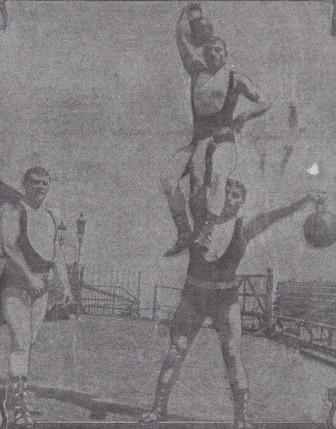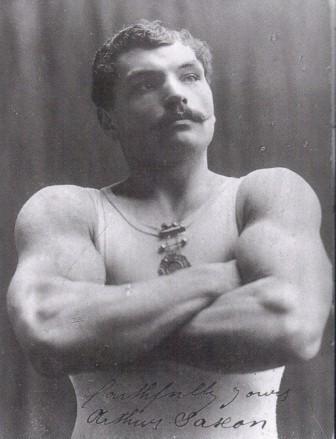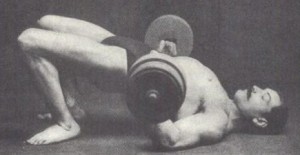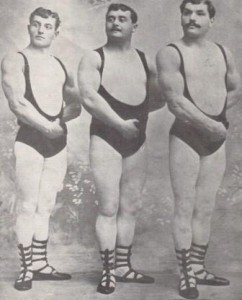What Goes Around….
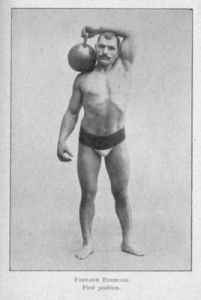
Arthur Saxon would probably be considered "cutting edge" with most of his training techniques today!
by Thom Van Vleck
Recently, I had a young guy come out to my place to try out the Highland Games. He was in his early 20’s and had done some weight training at the local YMCA and in high school, but was not a hard core lifter or iron game follower. What was funny was I gave him a tour of my gym and he started pointing to things I had like they were new and cutting edge. As if my gym was equipped with “all the latest”. In particular, he pointed to my Kettlebells and said, “Wow, you have some kettlebells, I would like to try training with those, I’ve heard they are really good to train with”.
This was in contrast to when my Uncle Wayne Jackson saw the Kettlebells right after I had bought them. Wayne gained the bulk of his training knowledge from reading S&H, MD, and Ironman in the 50’s and 60’s. He said, “So what are you going to do with those old things”. As if I had raided the York Barbell museum! Wayne’s comments leaned towards how Kettlebells were never us used in his day and you couldn’t find those for years and he wasn’t sure what good they were going to do me.
In 2009, I got to go to the Arnold Fitness Expo. It was there I found out just how “popular” Kettlebells had become again. They were having a competition that centered around doing all kinds of different maneuvers with the kettlebells, some of which I could see a lot of benefit, some….not so much…but hey, I swing a hammer in circles and flip telephone poles in my spare time….so who am I to judge.
I have a lot of stuff in my gym, most of it is pretty old or “well used”. It is funny to me how things go in and out of style. It got me to pondering “WHY”? A lot of times exercises and equipment get run out of town by the “latest thing”. Usually being sold by some guy looking to make a buck more than he’s trying to “revolutionize” the fitness industry. He tells us that the old stuff is dangerous, useless, or inferior and enough people buy into it that it becomes a self fulfilling prophecy and the old stuff falls to the wayside. But form follows function and eventually, what works is rediscovered and comes back again.
Now, this wasn’t intended to be an article on the benefits of Kettlebells, they are just an example. I’m not trying to sell you on the and I don’t sell them!!! Just remember, in our effort to get better (whether that be bigger, faster, stronger at lifting, throwing, team sports, whatever) we need to gain a broad understanding of what’s out there. We need to know our history, we need to know what works and what doesn’t and filter what comes from the so called “experts” so that we may find the tools we need to achieve our goals. We need to constantly look at what’s been used, what’s on the “shelf” (so to speak) and how can it be used to freshen up our training and lift us to victory! (no pun intended!).
